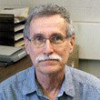Historical Perspectives On Contemporary Issues
Immortal Life: The Promises and Perils of Biobanking and the Genetic Archive
A forum held at the American Philosophical Society on September 28, 2017, and continued online here.
Are we now approaching a time when we could all live, at least in freezers, forever? Modern collection and storage of biological samples make possible a kind of "immortality" for anyone who has ever had a saliva sample frozen for genealogical testing or a blood sample stored in medical collections. New technologies, like CRISPR for gene editing, expand possible future uses of biological materials stored around the world. The story of Henrietta Lacks, popularized in a book by Rebecca Skloot and an HBO special starring Oprah Winfrey, illustrates the ways that a single person's cells and tissues can take on lives of their own as research material. In 1953, just before her death, Lacks's cancer cells yielded the oldest and most common human cell line still used in research.
There has been significant public interest in her remarkable story, but the "immortality" of people like Henrietta Lacks raises pressing questions for all of us. Who owns and controls bodily materials extracted from research subjects and patients? Who can profit from the cells and genes that make us who we are? How do we weigh the value of personal privacy and an individual’s sense of self against the potential for medical progress? How do imbalances of wealth and power influence questions of consent, exploitation, and identity for people who provide biological materials? These questions framed a public forum organized by the Consortium and hosted by the American Philosophical Society on September 28, 2017.
We invite you to watch the recording of the event, read the expert commentary, and join in on the discussion. If you are not already a registered member of our web site, please create an account here before participating in the discussion.
Questions or comments about this event or others like it? Let us know.
Featuring
 Susan Lindee
University of Pennsylvania
Susan Lindee
University of Pennsylvania
 Projit Bihari Mukharji
University of Pennsylvania
Projit Bihari Mukharji
University of Pennsylvania
Projit Bihari Mukharji is Associate Professor of the History and Sociology of Science at the University of Pennsylvania. His books include Nationalizing the Body and Doctoring Traditions. His work focuses on issues of marginality and marginalization both within and through science. His current research is on the history of human difference and race in 20th century South Asia, and how the politics of race, indigeneity and biocolonialism have influenced history.
Joanna Radin is Assistant Professor of the History of Medicine at Yale University. Her 2017 book, Life on Ice: A History of New Uses for Cold Blood, explores these issues and how indigenous activism around the preservation of blood provides new ways to consider their ethical dimensions. She is interested in the history of forward-looking projects in biomedicine, ecology, and anthropology in the 20th century and the politics of preservation and re-use. Her current research is investigating the ways that science fiction has shaped ideas about the future of biomedicine.
Department of the History of Medicine, Johns Hopkins University
Nathaniel Comfort is Professor of History in the Department of the History of Medicine and the Director of Graduate Studies in the History of Medicine at Johns Hopkins University.
Reducing the self to one’s molecular remains enables human identity to be treated as a commodity, but the use value of DNA is still rather low.
See more...Department of the History of Medicine, Johns Hopkins University
In different ways, both of these fascinating talks speak to questions of what it means to be human—and what it’s worth. Joanna described two ways in which identity is characterized via blood: through the serum and through the DNA; the former providing a sketch of the self, and the latter adding the awesome possibility of its biological construction or reconstitution. Considering all of the ways one could characterize human identity—through one’s labor, say, or through one’s relationships, or one’s property—it is obvious but not pointless to observe that not all of them freeze. Blood does. This quality enables us to play remarkable games with identity, via mechanically pushing back (however imperfectly) against the second law of thermodynamics. Freezing enables us to perform feats of time travel: We can gaze into the past to discern family relations; we can put a thumb on the hands of life’s pocketwatch, for a few moments or for decades, such that one’s present self can be preserved for later analysis or resurrection. Freezing also permits us to Z-fold the world map, bringing remote cultures into contact with all the tools of the modern biomedical research laboratory.
Projit’s story focused on the social construction of DNA identity, in an intricate tale of layered colonialism. In California, a campaign to expunge certain language from the state biology curriculum appears to be a protest against racism against Hindus. Projit showed that HAF mobilized the cultural authority of science to advance a particular narrative of Indocentric human evolution—one that just happened to reinforce the traditional caste system that placed their group at the top of the social totem pole. The twist of the kris comes when we learn that the “incontrovertible scientific evidence” on which the “Ur-heimat” theory is supposedly based is grounded not only on some highly subjective assumptions, but also on DNA data drawn from members of the lower castes. As Susan Lindee pointed out, the story bears more than passing resemblance to that of Henrietta Lacks, whose cancer cells permitted countless astonishing scientific advances (with the attendant emoluments of prize monies and patents), few of which were even legible to, let alone benefited, Lacks, her family, or her descendants.
In all of these cases, reducing the self to one’s molecular remains enables human identity to be treated as a commodity. As Marx tells us, a commodity has a use value, an exchange value, and a price. HeLa cells had high use value but low exchange value. George Gey, the Johns Hopkins physician who harvested and cultured Lacks’s cells, gave away those cells. Rebecca Skloot tells of how he would fly around the country, carrying vials of cells in his shirt pocket to keep them warm (no freezers for them!). Their exchange value was held down by publicly funded science; patenting them would have been very bad form and, until the Bayh-Dole Act of 1980, illegal. At that time, DNA was just becoming a commodity. Having come of age under neoliberalism, it has an exchange value that is substantial already and is rising fast. Physical molecules of deoxyribonucleic acid can be worth millions, if they, say, help solve a murder mystery. And the sequence information encoded in those molecules is bought and traded at a dizzying pace, by direct-to-consumer sequencing companies such as 23andMe and Illumina, by spinoff startups that use personal genome data to provide “personalized” services from nutritional supplements to wine lists.
I would argue that the use value of DNA, on the other hand, is still rather low. The excitement over human genomics still stems more from promises than from results. One could also note here that although the vast majority of mutations detected on disease screens are designated “VUS,” for “Variations of Unknown Significance,” as the head of the genetic counseling program one of the nation’s biggest and most prestigious medical centers told me, it’s “sequence first, ask questions later.” And as Projit noted, human genomics is rife with hidden assumptions that are papered over with numbers, like papier-mâché over an inflated balloon. But we have data, torrents of it—never mind that we don’t know what most of it means, nor whether we ever will. Consequently, the big money in the DNA market is still in futures.
Department of Anthropology, Durham University
Yulia Egorova is a Reader in Anthropology, Director of Postgraduate Studies, and Director of the Centre for the Study of Jewish Culture, Society and Politics at Durham University.
In many countries, research in constructing national or community-specific genomes continues to develop, which suggests that scientific practices linking biological material to national and cultural human diversity are symptomatic of wider socio-political agendas that privilege naturalist accounts of human difference.
See more...Department of Anthropology, Durham University
The issues raised in the presentations and the discussion concern a wide range of topics that have recently been debated in the history, philosophy and the social studies of science – biobanking, informed consent, constructions of immortality, genetics and the history of human migrations, diversity and discrimination, to name just a few. In this short contribution, I will use as my departure point the comment made by Susan Lindee at the beginning of the general discussion about different people occupying different positions of power in the networks involved in the production of biomedical knowledge. This comment, which goes to the heart of the story of Henrietta Lacks and the analysis presented in Joanna Radin’s and Projit Mukharji’s papers, also struck me as profoundly relevant to the discussion of studies in genetic populations diversity that I have come across in my work.
International and nation-wide genomic mapping exercises (such as the one that Mukharji mentioned in his talk in relation to Mexico) are often described by their proponents as initiatives imbued with liberatory potential, however, they reinforce already existing categories, even if these initiatives stem from the context of subalternity (Benjamin 2009, Schwartz-Marin 2011).
Earlier genomic mapping exercises had attracted severe criticism from different publics. The Human Genome Diversity Project, which was set up to provide a populations based counterpoint to the Human Genome Project, became seen by the World Council of Indigenous Peoples as an expression of colonial exploitation, as its organizers could not guarantee that it would not produce commercially profitable pharmaceutical products (Reardon 2005, Sommer 2016: 306-307). Some of the countries of the global south in recent decades initiated their own genome diversity projects, ostensibly with the aim of preserving and protecting national genomes, which are akin to earlier exercises in blood preservation discussed in Radin’s presentation. For instance, in Mexico, the claim about the alleged biological uniqueness of the Mexican nation was publicly supported through discourses invoking historical experiences of dispossession and the need to prevent the appropriation of national resources by foreign researchers. It was argued that in the future, genetics could be turned into a tool of oppression for potential consumers in emerging economies and that it was therefore imperative for Mexican publics to prevent national DNA material leaving the country and to support the development of their own genomic science (Schwartz-Marin and Restrepo 2013). In Colombia, genetic research became employed to discern and protect the country’s biological diversity, to decode its human history and to support claims for singularity of Colombian cultural and biological identities (Restrepo et al 2014: 61). In India, scientists expressed concern about Indian populations being left out of the world-wide exercises and initiated similar nation-wide genomic mapping exercises (Benjamin 2009, Egorova 2010).
At the same time, relations of domination within these very countries undermined the projects of benefitting the entire population. Although these policies were designed to promote academic and economic independence for local hubs of science and technology, they were also embedded in the global networks and processes of knowledge production. They naturalised national populations in the name of postcolonial empowerment, but at the same time borrowed practices and conceptual tropes from the wider context of ‘genetic labelling’ (Benjamin 2009). Thus, in Mexico, the project of national genomics reinforces the contradiction between the sacralisation of the nation’s indigenous roots and the day-to-day denigration of indigenous communities (Benjamin 2009: 353). Similarly, in Colombia, genomic mapping allowed both to put an emphasis on the mestizo nature of the population and to re-inscribe the inhabitants of specific regions as the other (Wade et al 2014: 504). In Brazil, genetic research set out to emphasize the mixed ancestry of self-identified white Brazilians and was presented as a potential antidote to racism, but subsequently was used to criticize race-based affirmative action policies (Kent et al 2015). In India, DNA studies of the history of the caste system, which were noted in Mukharji’s presentation, provided conceptual space to reaffirm the theory of Aryan migration, to naturalize and pathologise caste groups, while ostensibly asserting the theory about all castes being genetically mixed (Egorova 2010).
Moreover, the very agenda of constructing national or community-specific genomes has been exposed as highly problematic, as the genetic uniqueness of any population proved to be impossible to delimit – a point that Mukharji illustrated very clearly in his discussion of genetic studies conducted in India. For instance, scientists involved in the Mexican genome diversity project themselves asserted that the so called ‘Mexican genome’ could not be either defined or separated from other populations of the world (Schwartz-Marin and Arellano Mendez 2012: 284). In India, researchers from the Indian Genome Variation Consortium have admitted that social communities often did not map onto DNA-generated groupings, and that the term ‘Indian’ was a misnomer in these studies, as it obscured the human diversity of the sub-continent (Benjamin 2009: 345, 351). Nevertheless, in many countries this type of research continues to develop, which suggests that scientific practices linking biological material to national and cultural human diversity are symptomatic of wider socio-political agendas that privilege naturalist accounts of human difference. As Radin insightfully observed in relation to earlier exercises in collecting biological material, these practices are often based on good intentions, but, even the best intentions cannot guarantee that such work won’t lead to a revival of biological accounts of human diversity.
----------
Works Cited
Benjamin, Ruha (2009) ‘A Lab of Their Own: Genomic Sovereignty as Postcolonial Science Policy’, Policy and Society 28 (4): 341-355.
Egorova, Yulia (2010) ‘Castes of Genes? Representing Human Genetic Diversity in India’, Genomics, Society and Policy, 6 (3): 32-49.
Kent, Michael et al (2015) ‘Building the Genomic Nation: “Homo Brasilis” and the “Genoma Mexicano” in Comparative Perspective’, Social Studies of Science, 45(6): 839-861.
Reardon, Jenny (2005) Race to the Finish: Identity and Governess in the Age of Genomics, Princeton University Press.
Restrepo, Eduardo et al (2014) ‘Nation and Difference in the Genetic Imagination of Colombia’, in Peter Wade et al eds., Mestizo Genomics: Race Mixture, Nation and Science in Latim America, Durham and London: Duke University Press.
Schwartz-Marin, Ernesto (2011) Genomic Sovereignty and the Mexican Genome: An Ethnography of Postcolonial Biopolitics, PhD thesis, Exeter University.
Schwartz-Marin, Ernesto and A. A. Mendez (2012) ‘The Law of Genomic Sovereignty and the Protection of Mexican Genetic Patrimony’, Medical Law 31: 283-294.
Schwartz-Marin, Ernesto and Eduardo Restrepo (2013) ‘Biocoloniality, Governance, and the Protection of ‘Genetic Identities’ in Mexico, and Columbia’, Sociology, 47 (5): 993-1010.
Sommer, Marianne (2016) History Within: the Science, Culture, and Politics of Bones, Organisms and Molecules, Chicago: The University of Chicago Press.
Wade, Peter et al (2014) ‘Nation and the Absent Presence of Race in Latin American Genomics’, Current Anthropology, 55(5): 497-522.
Department of Anthropology, Penn State University
Kenneth M. Weiss is the Evan Pugh Professor Emeritus of Anthropology and Genetics in the Department of Anthropology at Penn State University.
Cell lines may be ‘immortalized’ in the sense that they can grow indefinitely in lab culture, but they will also continually accumulate changes that were not in the donor. Henrietta Lacks’ cells are not Henrietta Lacks!
See more...Department of Anthropology, Penn State University
This is an interesting discussion of important issues. However, the term ‘immortality’ is being used in a misleading way. Cell lines may be ‘immortalized’ in the sense that they can grow indefinitely in lab culture. But they will also continually accumulate changes that were not in the donor. Henrietta Lacks’ cells are not Henrietta Lacks!
Indeed, you are ‘immortal’, in a line of cells, going from you back to the origin of life 4+ billion years ago. And your offspring received cells from you, which are ‘immortal’ unless your descendants have no children. However, these things aside, there are legitimate issues of ownership, patenting and profiteering from human cell cultures.
Reconstructing population history, individual ancestry testing, and forensics are often done with DNA sequences rather than living cells. Sci-Fi like notions like reviving mammoths or Neanderthals cannot be done except by taking ancient DNA and putting it into some host cells in a modern animal. This is very different from sperm and egg banks which ethically assist couples in having children.
Are modern geneticists becoming Frankenstein risks to society? If cells like Lacks’ could be reprogrammed into the same gene-using state as a fertilized egg, could Lacks be ‘cloned’ into a new person? Perhaps. Agricultural examples are being developed. Would this be weird in humans? Maybe, but the resulting babies would be like identical twins, and not particularly controversial. However, even twins are not actually identical in their traits, including disease. The newly cloned person would not be Henrietta Lacks!
More importantly, most cell cultures are from older individuals. Their cells contain the many genetic changes (mutations) that arose during the donors’ lives, and more that accumulate during generations in cell-culture. Newly cloned descendants would be vulnerable to all sorts of health and well-being problems. In Lacks’ case, for example, the cells were cancerous, so somehow the cancer-related gene changes would have to be identified and fixed back to normal. Are we in fantasy wishful-thinking land here? Strong regulatory limits are needed, however, because there are, sadly, scientists who will eagerly try anything they can dream up. We even hear such talk about cloning mammoths or Neanderthal ancestors from ancient DNA. That sort of thing, and others like cloning armies of fearless soldiers should be left for the movies.
But if using cell culture to generate individuals should be heavily regulated, many uses are not ghoulish, and relate not to growing cloned people but developing disease therapies and prevention, that contribute to the public good. They should require truly informed consent with enforceable limitations rather than open-ended permissions. And an important note is that even if whole-person immortality is not involved, for some religions cells might be related to the donors’ souls and salvation, and we must enable total use-prohibition. The discussion should perhaps have included what we do to animals like lab mice in the name of public good, which merit much closer ethical scrutiny.
DNA is useful for reconstructing history. The discussion did not restrict itself to creditable research, and important points were correctly made about this (the urheimat ‘theory’). Knowledgeable population geneticists don’t make the mistakes described. The discussion also included the often-misleading genetic ancestry testing industry, properly called ‘genotainment’. But DNA samples can creditably be used for evolutionary reconstructions and at least general historical personal-ancestry estimates. How to regulate an often culpably misleading industry is a valid question, also because ancestry testing potentially identifies relatives who haven’t given consent. And there is the issue of race, so often viewed as a categorical variable: proper ancestry testing could correct such thinking, and distinguish between sociocultural ideas about race, and the biological reality.
The genetic study of indigenous populations was raised, and while issues of exploitation are legitimate, the discussion was rather unfair. When ‘we’ study ‘them’ we are being intrusive but if we are given permission (perhaps in exchange for trade goods), it may be selfish but harmless. Some of the potshots taken in the discussion seemed unjustified, academically self-serving, and unfair to the geneticists involved. There are legitimate questions about life and health that can be answered by anthropological studies even if, yes, the scientists benefit more than those who are studied. The issues are complex because systems need watchdogs—but not all DNA collection from indigenes was malevolent exploitation. If protested, usage of such samples should of course be stopped; but even then, returning samples to populations from whom they were collected is far from easy, as I know from my own experience with the Amazonian samples that were mentioned. Informed consent criteria have changed since collections decades ago, and proper consent is important. But while geneticists are fallible and make juicy targets, they have rarely been the real perpetrators when it comes to damage to indigenous peoples.
We should not extend our critiques too far. To talk about ownership of our microbiomes seems like a territory grab by academics who are not in the trenches. Confidentiality would be in order if, for example, an individual’s gene sequence is shown to be related to his/her microbial disease susceptibility; but that is just part of personal genetic confidentiality.
It is important for the public to have a better understanding of science and how it may affect their lives. The history of science provides context and examples of what to do or not to do. Scientists are (mostly) only human, with all the usual failings. But academics not directly involved in the science can also be tempted to make too-easy criticisms, exploiting their forum for their own academic purposes. The public needs to understand all these issues better. Making things meaningful to those without academic training in these often very technical areas is a challenge. But it is one that deserves serious attention.
Insights from the Collections
The Consortium’s collections provide many opportunities to learn more about the history of research in human cellular biology, the genetic archive, and heredity. Indeed, a significant amount of the research supporting the presentations in this video was conducted using Consortium-member archives.
Our cross-institutional search tool allows researchers to investigate materials across multiple institutions from a single interface. With more than 4.4 million catalog records of rare books and manuscripts, the Consortium’s search hub offers scholars and the public the ability to identify and locate relevant materials.
Search the Consortium search hub.
Some archival materials related to this topic include:
The Baruch S. Blumberg papers, American Philosophical Society
The James V. Neel papers, American Philosophical Society
The John Rodman Paul papers, Yale University
Journal of the research vessel Alpha Helix, New York Academy of Medicine
Indian genetics and heredity periodicals, Linda Hall Library
“Linkage disequilibrium” and genetics texts, Cold Spring Harbor Laboratory and New York Academy of Medicine
“Urheimat” theory, Newberry Library
Alexis Carrel Papers on cellular immortality and organ sustainability, Rockefeller Archive Center
Theodore Malinin Collection of Alexis Carrel and Charles Lindbergh Papers, Rockefeller Archive Center
Oral histories with Pew Scholars in Biomedical Sciences, Science History Institute
Related publications from our speakers:
Moments of Truth in Genetic Medicine, by M. Susan Lindee; Johns Hopkins, 2005.
Genetic Nature/Culture: Anthropology and Science beyond the Two-culture Divide, edited by Alan Goodman, Deborah Heath, M. Susan Lindee; California, 2003.
Suffering Made Real: American Science and the Survivors at Hiroshima, by M. Susan Lindee; Chicago, 1994.
The DNA Mystique: The Gene as a Cultural Icon, by Dorothy Nelkin and M. Susan Lindee; Michigan, 2004.
Doctoring Traditions: Ayurveda, Small Technologies, and Braided Sciences, by Projit Bihari Mukharji; Chicago, 2016.
Nationalizing the Body: The Medical Market, Print and Daktari Medicine, by Projit Bihari Mukharji; Anthem, 2009.
Medical Marginality in South Asia: Situating Subaltern Therapeutics, edited by David Hardiman and Projit Bihari Mukharji; Routledge, 2015.
Crossing Colonial Historiographies: Histories of Colonial and Indigenous Medicines in Transnational Perspective, edited by Anne Digby, Waltraud Ernst, Projit B. Mukharji; Cambridge Scholars, 2010.
Life on Ice: A History of New Uses for Cold Blood, by Joanna Radin; Chicago, 2017.
Cryopolitics: Frozen Life in a Melting World, edited by Joanna Radin and Emma Kowal; MIT, 2017.



Susan Lindee is Janice and Julian Bers Professor and Department Chair of History and Sociology of Science at the University of Pennsylvania. Her books include Suffering Made Real, The DNA Mystique, Moments of Truth in Genetic Medicine, and Rational Fog: Science and Technology in Modern War.